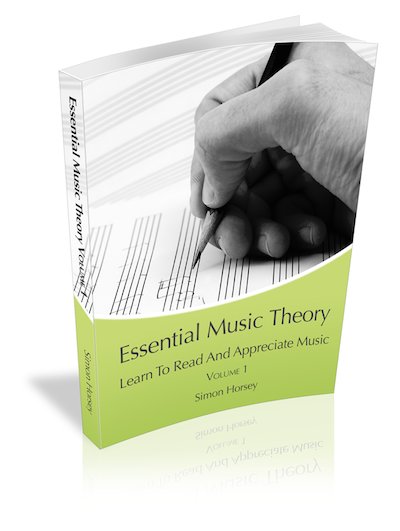Which Music Clef?
The names of notes on a staff depend on which music clef is at the start of the staff. In the past there have been many different clefs used, but we will focus on the main clefs in use today. If you are interested in reading more about musical clefs Click here to read about the history, use and development of the clef.
The primary aim of a music clef is to establish the pitch of a particular line. There are 3 main pitch clefs in use.
The G style clef

The F style clef

The C style clef
There are also clefs for unpitched percussion instruments and a clef to indicate tablature. See below for examples of these two clefs.
The G Clef (Treble Clef)
The G Clef is so called because it establishes the pitch of G above middle C on the staff. Whatever line the G clef is curled around is G above middle C.

The G Clef in use today curls around the 2nd line of the staff, showing the pitch G to be the note on the second line. We also know this as the Treble Clef.
Click here to learn more about the notes on the treble staff
The F Clef (Bass Clef)

The F Clef is so called because it establishes the pitch of F below middle C on the stave. Whatever line the two dots of the F clef are either side of is F below middle C.
The F Clef in regular use today has the dots either side of the 4th line of the staff, showing the pitch F to be the note on the fourth line. We also know this as the Bass Clef.
Click here to learn more about the notes on the bass staff
The C Music Clef (Alto Clef and Tenor Clef)

The C Clef is so called because the the C clef establishes pitch
of middle C on the line bisecting the clef. The two C Clefs in use today
are the Alto Clef and the Tenor Clef

The Alto Clef has the 3rd line bisecting the clef, showing the third line to be Middle C.

The Tenor Clef has the 4th line bisecting the clef, showing the fourth line to be Middle C.
TAB

Guitar, and in the past lute, music is often written in TAB, short for
Tablature. The Tab clef looks like this.. For more information on
tablature please check back soon for the Essential Music Theory guide to
reading TAB.
Percussion clefs
The percussion clefs show different instruments on different lines of the stave. These may be different unpitched percussion instruments, or different drums in a drum kit. The unpitched percussion clefs look like those below.


A Clear Path To Learning Music Theory
For more help check out my new theory book Essential Music Theory: Learn To Read And Appreciate Music Vol. 1 available for iPad and Mac OS.
- A simple step-by-step course that takes you from complete beginner to grade 2 music theory
- Multi-faceted learning - audio, video, mind maps, clear musical examples
- Built in quizzes to check your understanding
Click here for more information.
Or get it on the iBooks Store!
Return to the Essential Music Theory Homepage from Music Clef

